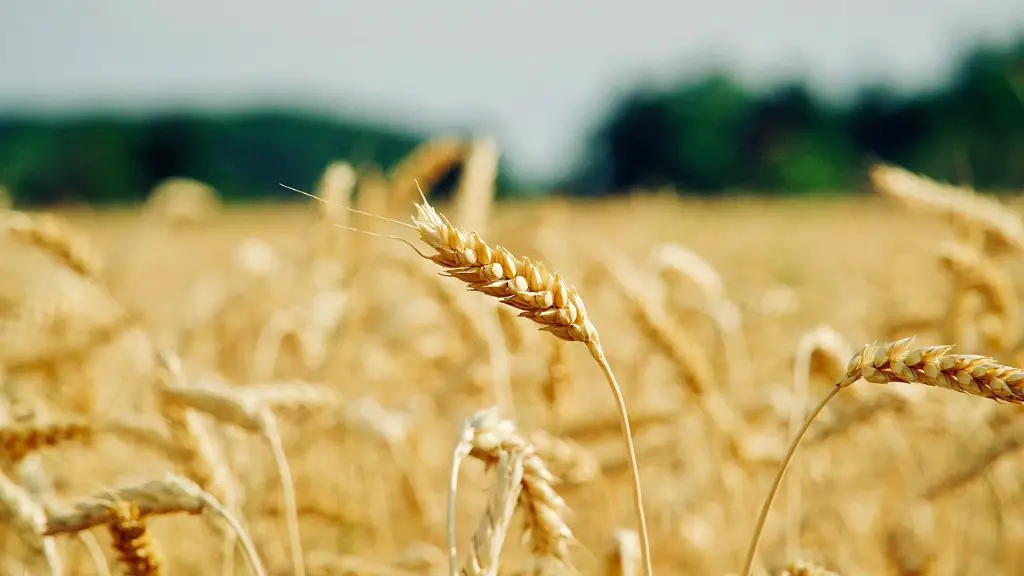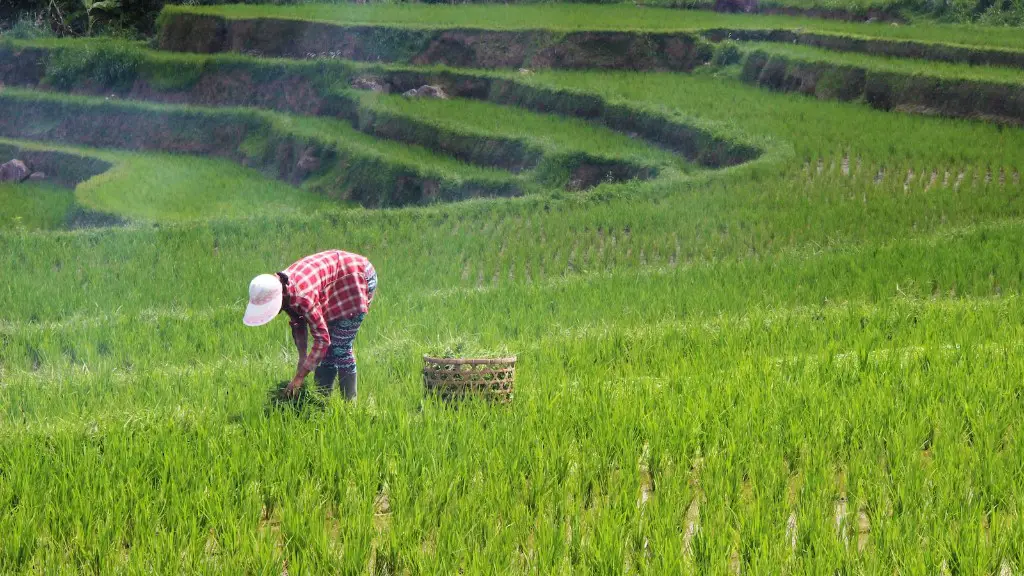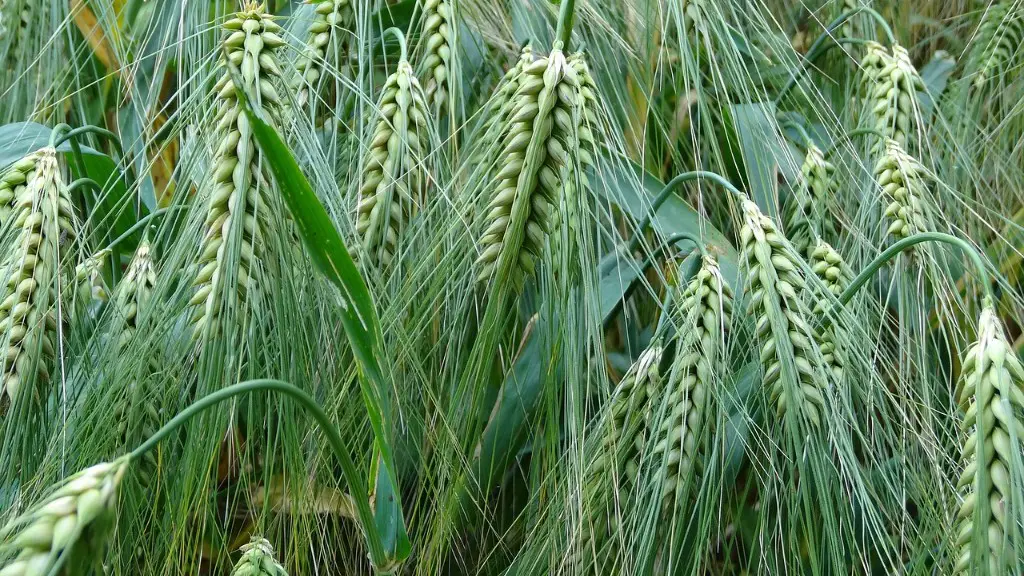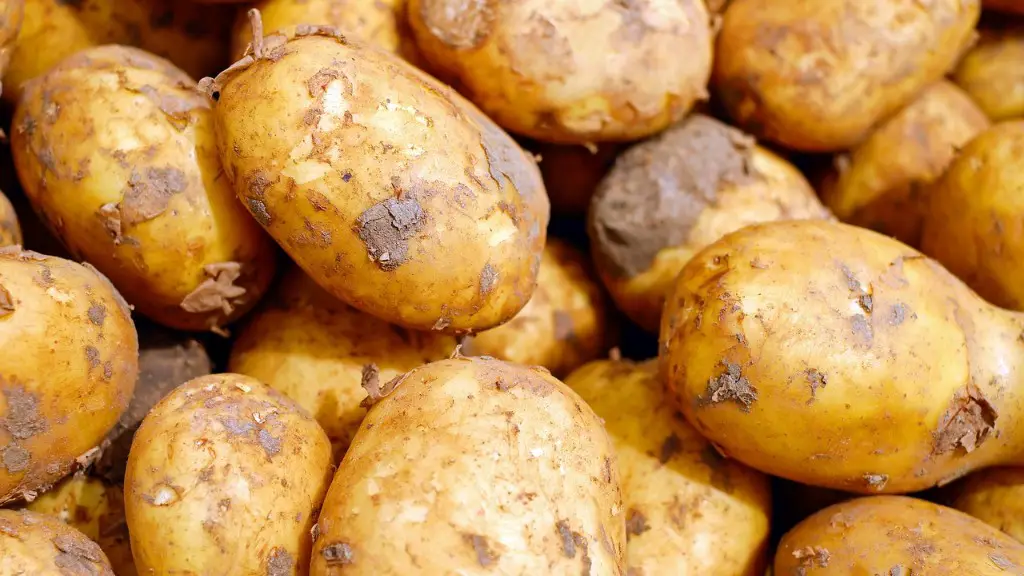Even though farming and agriculture have been around for centuries, technology is now playing a starring role in this important industry. From GPS systems and soil sensors to weather monitoring and irrigation systems, technology is helping farmers increase yields, decrease inputs, and be more profitable. In this essay, we’ll explore how technology is being used in agriculture today.
There are a number of ways in which technology is used in agriculture. One way is through the use of sensor nodes placed in fields which relay data back to a central computer. This data can be used to track and optimize a number of different factors such as irrigation, planting, and crop yields. Additionally, GPS systems are often used in conjunction with mapping software to help farmers more accurately plan their fields and planting patterns. Finally, agricultural robots are becoming more prevalent as a way to automate tasks such as crop thinning and harvesting.
What new technology is being used in agriculture?
The use of automated harvesters, drones, and autonomous tractors is transforming how farmers cultivate their crops. The technology takes care of menial and recurring tasks, allowing farmers to focus on more critical functions. This helps to improve efficiency and productivity on the farm, and can ultimately lead to better yields.
Farms are increasingly utilizing technology to automate various tasks, from harvesting to seeding and weeding. Autonomous tractors and drones are becoming more common, as they can operate more efficiently and effectively than human workers. This trend is likely to continue as technology advances and becomes more affordable.
What are 5 examples of technologies used in agriculture
There are many new technologies emerging in the field of agriculture. Here are the top five:
1. GIS software and GPS agriculture: This technology is used to map out farms and fields, and to track and manage crop production.
2. Satellite imagery: This technology can be used to monitor crop growth and soil conditions.
3. Drone and other aerial imagery: This technology can be used to survey farmland and to identify problems with crops.
4. Farming software and online data: This technology can be used to track farming operations and to manage crop production data.
5. Merging datasets: This technology can be used to combine data from different sources to create a more comprehensive picture of agriculture.
Precision agriculture is a term used to describe the use of technology and science to collect data and analyze efficiency in order to improve yields and save money. Farmers and other agricultural workers use precision agriculture techniques to monitor growth and quality, and to make more informed decisions about planting, irrigation, and crop management.
What are 3 important inventions that improved agriculture?
1. The reaper was invented in the early 1800s and revolutionized the way farmers harvested small grains. It allowed them to cut and collect the grain much more efficiently than before.
2. The thresher was invented in the early 1800s as well and helped farmers to remove kernels from the straw much more efficiently.
3. The steam engine was invented in the early 1800s as well and helped to power many of the new machines that were being invented, including the reaper and thresher.
4. The combine was invented in the late 1800s and allowed farmers to harvest and thresh grain much more efficiently.
5. The automobile was invented in the late 1800s as well and helped farmers to get their products to market much more quickly and easily.
6. The tractor was invented in the early 1900s and helped farmers to plow and cultivate their fields much more efficiently.
7. Hydraulics were invented in the early 1900s and helped to power many of the new machines that were being invented, including the tractor.
Crop productivity has increased significantly over the years due to advancements in technology. This has in turn increased the profits of farmers and reduced the cost of operations. Additionally, the decreased use of water, fertilizer, and pesticides has helped to reduce the prices of food. The reduced impact on natural ecosystems is another positive outcome of this increased crop productivity.
What is the most important agricultural technology?
There are many benefits to genetically modified crops. For farmers, these crops can offer higher yields and more resistance to pests and disease. For consumers, GM crops can offer higher nutritional value and greater food safety. GM crops are an important technological advancement in the agricultural sector and offer many benefits for both farmers and consumers.
The use of sophisticated technologies in agriculture has revolutionized the way farmers operate. These advanced equipment, precise farming and robotic systems enable companies to be more profitable, more efficient, safer and more environmentally friendly. This has made a huge impact on the agricultural industry and has tapped into new markets and opportunities.
What is the latest technology in agriculture in 2022
Drones are an incredible new technology that is beginning to revolutionize the agricultural industry. By reducing the amount of labor required to growing a crop, drones are able to significantly improve the efficiency of farms and the overall quality of the food that they produce. In addition to monitoring crops and spraying fertilizers and pesticides, drones can also be used to transport goods and materials from one location to another, which can further improve the efficiency of farms.
The agricultural industry is undergoing a major transformation, thanks to connected sensors, smart tractors, drones, machine learning (ML), artificial intelligence (AI), and farm management software. These systems are reducing water usage, fuel consumption, the use of fertilizers, and ultimately carbon output. As a result, the agricultural industry is becoming more sustainable and efficient.
What is smart farming technology?
Smart farming is an emerging technology that has the potential to revolutionize the agricultural industry. By using new technologies, farmers can increase production and minimize the environmental impact of farming.
Technology has definitely played a role in boosting agricultural productivity. The introduction of irrigation systems has made it possible to grow crops in otherwise arid areas, and the development of high-yielding crop varieties has made it possible to produce more food with less effort. In addition, modern technology has made it possible to develop crop varieties that are resistant to pests and diseases. This has helped to reduce the amount of time and effort required to produce food.
What are 5 positive effects of technology
From data security to faster money transfers, technology has made life better in multiple ways. It has also made some processes easier, such as retrieving data and advertising. In addition, technology provides easier access to education. Many of the everyday items we use are simplified thanks to technology.
The use of 3D digital representations of farms by farmers allows them to monitor crops in real-time and take direct action on the plants without the need for physical intervention. This act of digitally stimulating plant growth or adjusting temperature and water flow can help improve crop yields and quality.
How can technology help make agriculture more successful and sustainable?
The advances in machinery have helped farmers to cultivate more land efficiently and with higher yields. The seed, irrigation, and fertilizers have also greatly improved, making farming more productive overall.
Agriculture is the process of producing food, feed, fiber and other desired products by the cultivation of certain plants and the raising of domesticated animals.
There are four main branches of agriculture, which are livestock production, crop production, agricultural economics, and agricultural engineering.
Livestock production covers the raising of animals for meat, milk, eggs, and other products.
Crop production involves the cultivation of plants for food, feed, fiber, and other products.
Agricultural economics covers the study of the economic factors that affect agriculture, including prices, farm policy, and market conditions.
Agricultural engineering covers the design and construction of agricultural equipment and facilities, as well as the engineering of systems for livestock production, crop production, and food processing.
Warp Up
Technology is used in agriculture to help farmers be more efficient and produce more food. Farmers use technology to help with tasks such as planting, irrigation, and harvesting. They also use technology to help track and predict weather patterns and forecast insect and disease outbreaks.
After years of struggling to make a profit, farmers are now using technology to increase yields and reduce costs. Farmers are using GPS systems to map their fields, drones to monitor crop health, and robots to harvest fruits and vegetables. This technology is helping farmers to increase their yields and reduce their costs, making agriculture a more profitable industry.





